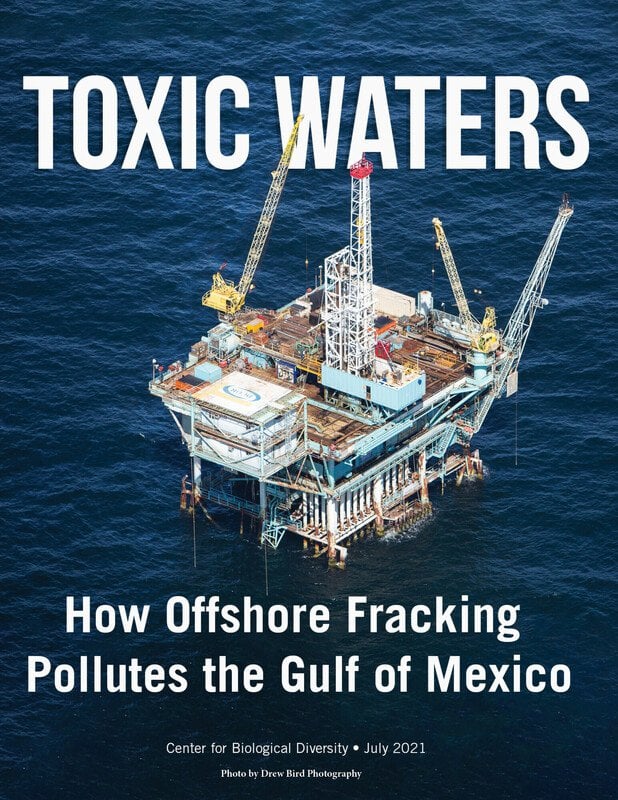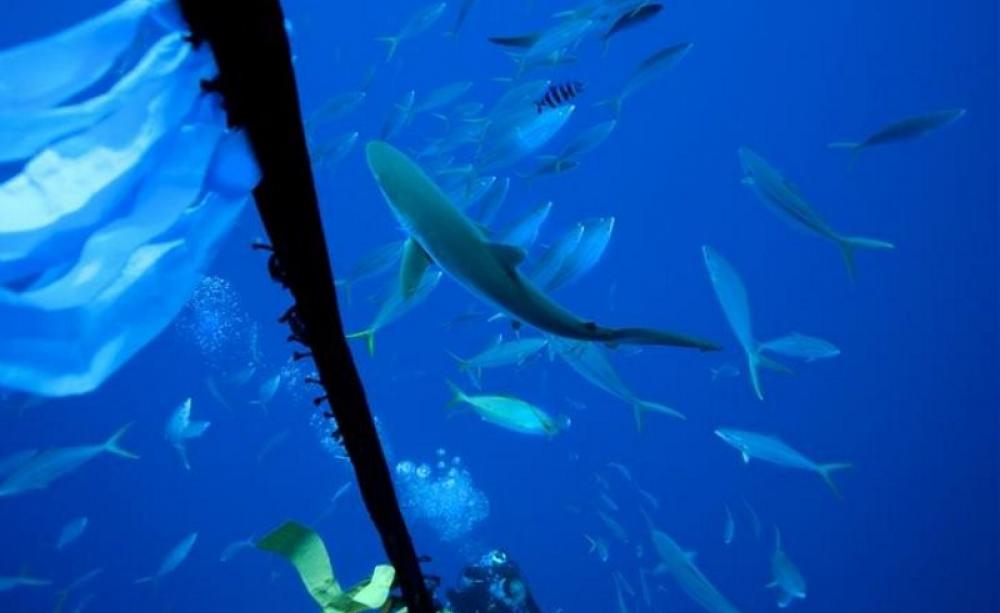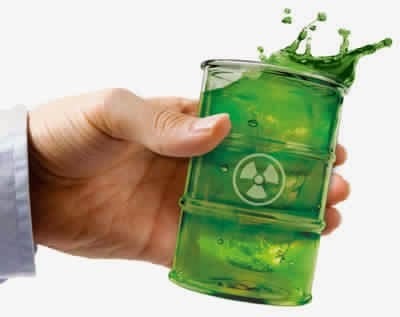|
All Global Research articles can be read in 51 languages by activating the “Translate Website” drop down menu on the top banner of our home page (Desktop version).
Visit and follow us on Instagram at @crg_globalresearch.
***
The Following text is Part II of David Skripac’s incisive and carefully documented analysis of Humanity’s March Towards Extinction.
Parts III and IV are forthcoming.
To Read Part I
“Our Species is Being Genetically Modified”: Humanity’s March Toward Extinction? Analysis of the Microbiome and Virome
By David Skripac, July 17, 2021
***
Part II. Our War Against Nature
The species known as Homo sapiens is the only one on this planet that is actively seeking to eradicate itself and its habitat. All of the earth’s life support systems—soil, water, and air—are in decline as a direct result of our current economic activity, which is geared to extract as much from the sacred earth as possible without any regard for the consequences that ensue.
By embracing such an intolerable economic paradigm, we fail to respect ecological and ethical limits. Our consumption-driven economic model, which we have designed and are now enslaved by, causes perpetual deficiencies—resource depletion, biodiversity loss, and contamination by toxic substances, all of which wreak perpetual havoc on the entire ecosystem and its surrounding environment. Megacorporations continue to propagate the ideology of endless economic growth, which they intend to squeeze out of a planet with finite resources and from which they alone will benefit financially. Their self-centered aims clash with the generous motives of the masses, who favor the concept of equal opportunity, including the equal right of all humans to live in a healthy environment. The billionaire set’s relentless quest for profits at the expense of everyone’s social well-being is fueling worldwide competition for resources and causing an eco-holocaust. In short, what we are witnessing is a new form of colonialism that is being imposed by the predator class on all of humanity as we enter what is commonly referred to as the sixth mass extinction.
Consider what we are doing to our fresh water. A full 80 percent of our planet’s surface is composed of water, of which 97 percent is salt water. The remaining 3 percent of our available supplies of drinking water have been treated so recklessly that they are highly polluted and rapidly depleting. Of that 3 percent fresh water, at least 29 percent is siphoned off by the water-intensive meat and dairy industries. The United Nations estimates that over the next decade 2 billion people will suffer extreme water scarcity and that by the end of this century half of the world’s population will experience some kind of water scarcity.

The mining and oil industries are no friends of the environment either. In the US, mining companies have removed over 500 mountains in the Appalachians, causing immense ground pollution and surface water pollution. In other parts of the country, drilling for shale oil and gas, called hydraulic fracturing but better known as fracking, pumps carcinogens and toxins into the air, water, and soil, further exacerbating the pollution problem. Though touted as a solution to America’s dependency on foreign oil, fracking is in fact the final act of stupidity by a petrostate.
The aforementioned meat and dairy industries do more harm than just hogging water. Animal agriculture—encompassing huge factory farms and small family farms—is also the leading cause of greenhouse gases, deforestation, species extinction, and ocean “dead zones.” The industrial intensive farming of animals and their feed crops is largely to blame for the highest rate of species mass extinction in 65 million years.
Moreover, no other industry on the planet needs as much acreage as animal agriculture: It hoards 45 percent of all ice-free land on the planet. According to the World Animal Foundation, 70 percent of the Amazon rainforest is being destroyed for the sole purpose of growing GMO soybean or corn crops that feed livestock in South America and Europe. Between 1970 and 2019, a total of 718,927 square kilometers of the Brazilian portion of the Amazon rainforest was deforested.

A few more facts to consider:
- Fully half of the world’s grain supply is destined for food animals at the same time that one billion people face starvation.
- In the US, 54 percent of all fresh water is diverted by animal agriculture at a time when 99.8 percent of the geographic area of California is in a critical drought.
- Worldwide, the animal agriculture industry, which kills at least 72 billion land animals every year (200 million every day), contributes 51 percent of all greenhouse gas emissions, far exceeding the 13 percent contributed by all modes of transportation combined.
The most surprising “fact” about the devastation wrought by animal agriculture, though, is that almost all of the purported environmental nonprofits are silent on this issue.
The environmental calamity is even more dire in the world’s oceans. The commercial fishing industry is destroying ocean life, including ocean floors, at a pace never seen in recorded history. No other industry kills more animals than this trade. A report by Matthew Zampa for Sentient Media observes that between 37 billion and 120 billion fish are killed in manmade commercial fish farms each year and at least another trillion aquatic animals living in natural water bodies are killed for food each year. Research presented on the Oceana website contends that this staggering total does not include the 100 million sharks and 650,000 whales, dolphins, and seals that are killed every year as bycatch. (Bycatch is the total number of sea animals who fishermen unintentionally catch in their nets and kill, either by discarding at sea or bringing back to port.)

As a result of all this extraction and extermination, global populations of numerous species of aquatic life are plummeting to near-extinction levels. A scientific study presented in The New York Times predicts that if commercial fishing around the world continues at its present pace, by 2048 the oceans will be practically empty.
Equally worrisome, the oceans are used as a dumping ground for manufacturing and mining enterprises around the world. It should come as no surprise that researchers at UC San Diego’s Scripps Institution of Oceanography have found that fish populations in the oceans are contaminated with heavy metals like mercury, polychlorinated biphenyls (PCBs), organochlorine pesticides (DDTs and CHLs), polybrominated diphenyl ethers (PBDEs), plastic compounds, and hexachlorobenzene.
The makers of synthetic chemicals, pesticides, insecticides, herbicides, and fertilizers are among Earth’s worst enemies. The newest threat to our environment comes from genetically modified industrial crops, known as genetically modified organisms, or GMOs. With the introduction of these new crops we have accelerated our ability to manipulate nature at a rate unimaginable in any earlier era. Unfortunately, as a consequence of our meddling, we are seeing an explosion of chronic disease.
How does our aforementioned discussion of microbiomes, viromes, and immunity fit into this picture of environmental desolation?
For one thing, ever since the introduction of chemical farming and the use of GMOs on a global scale in 1996, we have altered our natural surroundings to such an extent that we are decimating our innate immune system. (Remember that date: 1996.) As a result, autoimmune and other chronic diseases that at one time affected only a minute percentage of the general population are now exploding in prevalence. The timing of this surge is not lost on us: These diseases began afflicting humans in a big way beginning in, yes, 1996. It is not farfetched, then, to conclude that the profligate use of GMOs is related to the marked decline in human health over the past two-and-a-half decades.
I’ll cite a few examples:
1 in 4 people worldwide now suffer from allergies; 1 in 3 in North America are obese; 1 in 2 women and 1 in 3 men in the US will develop cancer in their lifetime.
In addition, the developmental disability termed autism spectrum disorder has risen from 1 in 5,000 children in 1975 to 1 in 36 in 2016. If the current trend continues, we can expect to see 1 in 3 children plagued by autism by 2035. Meanwhile, in the same time period, we have seen a dramatic rise in other immune system disorders, such as Crohn’s, celiac disease, Parkinson’s (in men), Alzheimer’s (in women), dementia, and type 1 diabetes.
 GMO crops are sprayed with herbicides, such as Bayer’s Roundup, which contains the active ingredient glyphosate and which is the most ubiquitous cancer-causing herbicide/antibiotic on the planet. In 2014, over 747 million kg of glyphosate was used worldwide. Now, a mere seven years later, that figure has more than doubled, to 2 billion kg. Being a water-soluble compound, glyphosate contaminates ground water everywhere, from China to North America. As if that weren’t bad enough, glyphosate is also contaminating the air we breathe. A study from the US Geological Survey conducted in 2007 reveals that Roundup (aka glyphosate) and its toxic by-product aminomethylphosphonic acid (AMPA) were found in over 75 percent of the air samples and rain samples tested in Mississippi in 2007. GMO crops are sprayed with herbicides, such as Bayer’s Roundup, which contains the active ingredient glyphosate and which is the most ubiquitous cancer-causing herbicide/antibiotic on the planet. In 2014, over 747 million kg of glyphosate was used worldwide. Now, a mere seven years later, that figure has more than doubled, to 2 billion kg. Being a water-soluble compound, glyphosate contaminates ground water everywhere, from China to North America. As if that weren’t bad enough, glyphosate is also contaminating the air we breathe. A study from the US Geological Survey conducted in 2007 reveals that Roundup (aka glyphosate) and its toxic by-product aminomethylphosphonic acid (AMPA) were found in over 75 percent of the air samples and rain samples tested in Mississippi in 2007.
Meanwhile, the longest river in the United States, the mighty Mississippi, and its hundreds of tributaries collect more than 80 percent of the Roundup sprayed on crops in the entire USA. The Mississippi River is also the recipient of thousands of other chemical pollutants that are dumped into it by petrochemical companies. It’s no surprise that the people residing along the last 140 km stretch of the river, which runs through Louisiana—specifically in the Baton Rouge and New Orleans area—have some of the highest rates of cancer in the entire world.
With the Roundup patent once owned by Monsanto (now Bayer) having expired in 2000, China has become the leading user and exporter of glyphosate in the world. In 2017, China exported over 300,000 tons of glyphosate globally. It turns out that Hubei Province, where the infamous Wuhan sits, is one of the leading users of glyphosate in China. The combined toxic effects of pork production, heavy manufacturing, and chemical farming in Hubei have made this region one of the most polluted places on earth. The once-diverse and clean ecosystem in Wuhan has been utterly ravaged by manmade pollutants and the massive use of glyphosate in industrial farming.
There is an indisputable link between the current high rate of cancer and the extensive use of glyphosates. Within a single generation, the rate of cancer diagnosed in men has doubled. Paralleling that rise, in the 25 years (roughly a generation) between 1990 and 2015, the toxicity of the environment also doubled.
Statistical data compiled by Nancy L. Swanson et al. in the Journal of Organic Systems provides overwhelming evidence of a precise correlation, from 1975 to 2010, between glyphosate usage and the incidence of many different types of cancer, including urinary/bladder cancer, liver cancer, thyroid cancer, and myeloid leukemia. The graphs presented in the Swanson study show that the increased prevalence of cancer perfectly overlaps the increased use of glyphosate.

Another link that cannot be ignored is the decline in male sperm counts in Western countries. Shanna Swan, an epidemiologist at Mount Sinai Medical Center in New York and a leading scholar of reproductive health, projects that sperm counts of the median man are set to hit zero by 2045. With the introduction of endocrine-disrupting chemicals (EDCs), male sperm counts have dropped 50% to 60%—an average of 1% to 2% per year—between 1973 and 2011. Granted, endocrine-disruptor microplastics in our drinking water pose a problem, but that problem pales in comparison with the damaging effects of chemical farming and the use of glyphosate, contends internal medicine, endocrinology, and metabolism specialist Zach Bush, MD, on his Global Health Education website.
Moreover, writes Dr. Bush,
“glyphosate functions as a potent chelation agent, locking up the nutrients within soil, plant, and water systems such that we can now find ourselves in the equivalent biologic state of starvation in the midst of the most extreme caloric excess that humanity has ever produced.”
 Worldwide warnings from other scientists, doctors, and environmentalists abound. For instance, Dr. Vandana Shiva, an environmental and food sovereignty activist and ecofeminist based in Delhi, India, has been continually cautioning, in books and articles she pens and in speeches and interviews she gives around the world, that GMOs have ruined soil and plant life by inhibiting their ability to maintain microorganisms and minerals, such as zinc, iron, and magnesium, which are vital for immune response in animals and humans. In her 2012 opinion piece titled “Myths About Industrial Agriculture,” Dr. Shiva cited a 1995 study that found industrial agriculture (which began in 1965) to be responsible for 75 percent of the earth’s biodiversity erosion, 75 percent of its water destruction, and 40 percent of its greenhouse gases, while producing only 30 percent of humans’ food supply. Worldwide warnings from other scientists, doctors, and environmentalists abound. For instance, Dr. Vandana Shiva, an environmental and food sovereignty activist and ecofeminist based in Delhi, India, has been continually cautioning, in books and articles she pens and in speeches and interviews she gives around the world, that GMOs have ruined soil and plant life by inhibiting their ability to maintain microorganisms and minerals, such as zinc, iron, and magnesium, which are vital for immune response in animals and humans. In her 2012 opinion piece titled “Myths About Industrial Agriculture,” Dr. Shiva cited a 1995 study that found industrial agriculture (which began in 1965) to be responsible for 75 percent of the earth’s biodiversity erosion, 75 percent of its water destruction, and 40 percent of its greenhouse gases, while producing only 30 percent of humans’ food supply.
Ever since the mid-1990s, industrial/chemical farming has decimated the microbiome in the soil on a global scale. Consider: In 2014, a senior United Nations official, Maria-Helena Semendo of the UN’s Food and Agriculture Organization (FAO), explained to a forum that unless new approaches to farming were developed, the global amount of arable and productive land per person in 2050 will be only one-quarter of the 1960 level. Also consider: In a study conducted by Lancaster University in September 2020, researchers found that 90 percent of the earth’s conventionally farmed soils were thinning, and 16 percent of them had a lifespan of less than a century.
In short, the aforementioned reduction in male sperm counts, combined with soil degradation around the globe, are the two key factors that are driving humanity toward extinction.
Every time we spray Roundup or any of the other even-more-toxic herbicides that are now being widely used—such as 2,4-D (2,4-dichlorophenoxyacetic is a primary ingredient in the chemical warfare herbicide widely known as Agent Orange) or dicamba (an herbicide 200 times more toxic than the glyphosate in Roundup)—we are destroying the microbiome in the soil, in weeds and plants, in animals, and in our own microbiome. And, to hammer home a previously made point, Roundup disperses not only in the soil but also in the air. So do its rival products.
Lamentably, herbicides are not the only toxic substance found in the air we breathe. Many other pollutants—mercury, arsenic, sulfur, and cyanide, to name but four—likewise circulate in the atmosphere. These toxins, which are produced by the transportation and energy sectors, are adept at binding with carbon particulate matter. Fine carbon particulate, referred to as PM2.5 (that is, particulate matter that is less than 2.5 micrograms per cubic meter, or 100 times thinner than a human hair), is a by-product of burning fuel and chemical reactions. It is of particular concern to human health when levels of PM2.5 in the air are high, as these two 2017 studies from the NIH National Library of Medicine and the The New England Journal of Medicine demonstrate.
It turns out that not only toxins bind to PM2.5; so do viruses. Before the Industrial Revolution, viruses dispersed themselves equally throughout the atmosphere. However, now that carbon particulate matter is ubiquitous in the air, viruses are abnormally concentrating themselves around this substance. The greater the concentration of PM2.5, the greater the concentration of viral material.
Every single year, beginning in the last week of September and ending by late June, nature goes into its sleep cycle in the Northern Hemisphere. During this period, concentrations of carbon particulate and CO2 emissions and other pollutants that would normally be absorbed by trees, plants, oceans, and soil are unable to be absorbed. The result is very high concentrations of pollutants traveling in an easterly direction with the wind currents. (Along for the ride: clumps of spiked viruses that have hooked themselves onto the carbon particulates.) Compounding the problem—and reminiscent of the damaging effects of chemical farming—are increased concentrations of PM2.5 in areas where the soil has been degraded to the point that its living, breathing microbiome has lost the ability to absorb carbon at any time of year, regardless of the season.
Through NASA satellite imagery, we can see, starting in mid-October every year, a huge plume of carbon material floating from the heavy-industry hubs in China and other industrial regions of the world and dispersing in an easterly flow pattern across the Northern Hemisphere. By the month of May, this toxic haze blankets the Northern Hemisphere. You can check out IQAir for real-time data analysis of PM2.5 toxicity around the world.
Strangely, what we call “the seasonal flu” perfectly coincides with the time period when nature goes into its sleep cycle in the Northern Hemisphere. During the months we refer to as “flu season,” our bodies are more apt to experience an inflammatory event—fever, congestion, coughs, and a loss of appetite. This phenomenon takes place as our bodies adapt and come into balance with the industrial toxins in the environment. When summer arrives in late June, nature resumes its regenerative cycle: The plumes of PM2.5 slowly dissipate and finally disappear, reducing our risk of respiratory illness. That is why we seldom, if ever, experience influenza during the summer months in the Northern Hemisphere. Hence, by following the carbon particulate flows, we can actually map out and predict exactly where the hot spots of respiratory infections, of “pandemics,” and of seasonal influenza will occur.
*
Note to readers: Please click the share buttons above or below. Follow us on Instagram, @crg_globalresearch. Forward this article to your email lists. Crosspost on your blog site, internet forums. etc.
David Skripac has a Bachelor of Technology degree in aerospace engineering. During his two tours of duty as a captain in the Canadian Air Force, he flew extensively in the former Yugoslavia, Somalia, Rwanda, Ethiopia, and Djibouti. Using an inquisitive mind, a keen eye for detail, and problem-solving skills honed during his university years and throughout his career, David devoted over one hundred hours to researching the latest scientific findings in the fields of virology and microbiology to bring this article to fruition.
Featured image is from Mercola
|